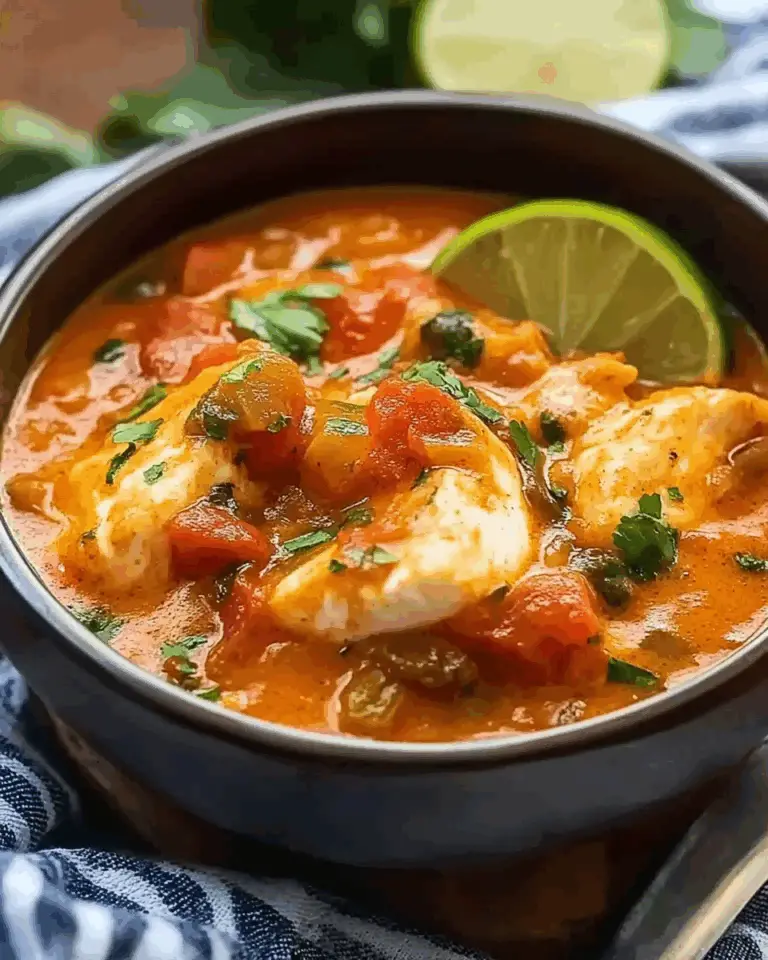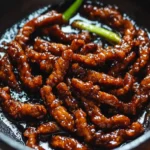The Cultural Legacy Behind Moqueca
The name “Moqueca” is thought to come from the Indigenous Tupi word moquém, meaning “slowly cooked.” Over the centuries, this indigenous cooking method merged with African and Portuguese culinary traditions to form the distinctive dish we know today. Moqueca exists in two main regional forms: Moqueca Capixaba, from Espírito Santo, which is more tomato-based and uses annatto oil, and Moqueca Baiana, from Bahia, which incorporates coconut milk, palm oil (dendê), and stronger African flavors.
Moqueca Baiana in particular is known for its richness and warmth. Bahia’s cuisine reflects the influence of West African slaves brought to Brazil during colonial times, and Moqueca Baiana stands as a proud symbol of that Afro-Brazilian culinary heritage. Today, it remains a fixture at family gatherings, festivals, and seafood restaurants along Brazil’s coast.
A Dish That Balances Richness with Brightness
What makes Moqueca Baiana so memorable is the way it expertly balances creamy coconut milk with the acidity of lime and the freshness of cilantro. The result is a broth that is luxurious without being heavy. It’s deeply flavorful, with layers of garlic, cumin, and paprika coming together harmoniously in a way that enhances but never overwhelms the fish.
The stew starts with marinated pieces of firm white fish—cod, halibut, or snapper are all excellent choices—tenderized with lime juice and lightly seasoned. This simple step ensures the fish stays flavorful and firm, even after simmering in the broth. When the fish is added back at the end, it gently absorbs the complex, spiced liquid without breaking apart, delivering juicy, flaky bites in every spoonful.
The Role of Coconut Milk and Tomatoes
At the heart of the stew is the coconut milk and tomato base, which sets Moqueca apart from other seafood dishes. Coconut milk provides creaminess and subtle sweetness, while crushed tomatoes add depth, acidity, and color. This pairing is key to the dish’s character, producing a stew that’s vibrant both in taste and appearance.
While the coconut milk adds richness, it also plays a cooling role, mellowing out the spice from cayenne and balancing the savory intensity of the broth. Full-fat coconut milk is recommended for best results, as it gives the stew a silky, luscious consistency that clings gently to the fish and vegetables.
Bell Peppers and Aromatics: Sweet, Smoky, and Colorful
No Moqueca is complete without the addition of sliced red bell peppers, which provide a slight sweetness and a pop of color that enhances the dish’s visual appeal. When sautéed with garlic and onion, they release their natural sugars and create a fragrant, flavorful base.
The aromatics are then enriched with spices like cumin, paprika, and cayenne, which bring subtle smokiness and just the right amount of warmth. These spices don’t dominate the dish—instead, they act in concert with the sweetness of coconut and tomatoes, the brightness of lime, and the freshness of cilantro to form a nuanced, balanced profile.
Serving Suggestions That Complement the Stew
Traditionally, Moqueca Baiana is served with steamed white rice, which absorbs the flavorful broth and complements the tender fish. Another common side is farofa, a toasted cassava flour mixture that adds texture and nuttiness to the meal. However, the stew is equally delicious when paired with crusty bread, mashed potatoes, or cauliflower rice for a more contemporary or dietary-conscious presentation.
A wedge of lime on the side allows guests to add more acidity if desired, and a final sprinkle of fresh chopped cilantro just before serving keeps the dish bright and aromatic. It’s a complete meal in one bowl—light enough for lunch, yet satisfying enough for dinner.
Healthful and Nutritious
Despite its richness in flavor, Moqueca Baiana is a relatively light and nutritious dish, making it an excellent choice for those seeking clean, whole-food meals. One serving delivers around 367 calories, with 29 grams of protein—thanks to the lean white fish—and a balance of carbohydrates and healthy fats from the coconut milk.
The dish also includes fiber and antioxidants from the bell peppers, onion, and tomatoes, as well as essential vitamins like Vitamin C, potassium, and iron. By avoiding heavy dairy, butter, or cream, the stew stays naturally dairy-free and gluten-free, accommodating a wide range of dietary preferences.
Versatility in the Kitchen
One of the joys of Moqueca Baiana is its adaptability. While the classic recipe calls for white fish, you can easily add other seafood like shrimp, scallops, or mussels for a mixed seafood version. Vegetarians can recreate the essence of Moqueca using firm tofu, eggplant, or hearts of palm as the protein element, making it suitable for plant-based diets.
The stew is also a wonderful make-ahead meal—its flavor improves with time as the ingredients meld. Leftovers store well in the refrigerator for up to three days, and gently reheating it over low heat helps maintain the integrity of the fish and the creaminess of the broth.
A Stew for All Seasons
Although Moqueca Baiana is a tropical dish, it transcends seasonality. In colder months, its warmth and richness provide comfort, especially when served piping hot over a bowl of fluffy rice. In warmer months, the citrus, cilantro, and bell pepper keep it bright and refreshing, making it a perfect al fresco dinner option.
Its versatility also makes it suitable for both casual meals and special occasions. Whether you’re planning a weekend family dinner, a festive celebration, or an impressive dish for entertaining guests, Moqueca Baiana delivers a memorable dining experience.
Conclusion
Moqueca Baiana is more than just a fish stew—it’s a dish that captures the spirit of Brazil’s northeastern coast in every bite. With its blend of vibrant colors, bold flavors, and creamy textures, it offers comfort, nourishment, and a tropical escape. The harmony between coconut milk, lime, tomatoes, and spices creates a depth of flavor that’s both exotic and approachable.
Whether you’re familiar with Brazilian cuisine or trying it for the first time, Moqueca Baiana is a recipe that invites exploration and appreciation. Its simplicity, nutritional balance, and cultural richness make it a standout addition to any home cook’s repertoire. Once you’ve made it, it’s sure to become a favorite for both weeknight dinners and festive occasions—warm, inviting, and always delicious.






